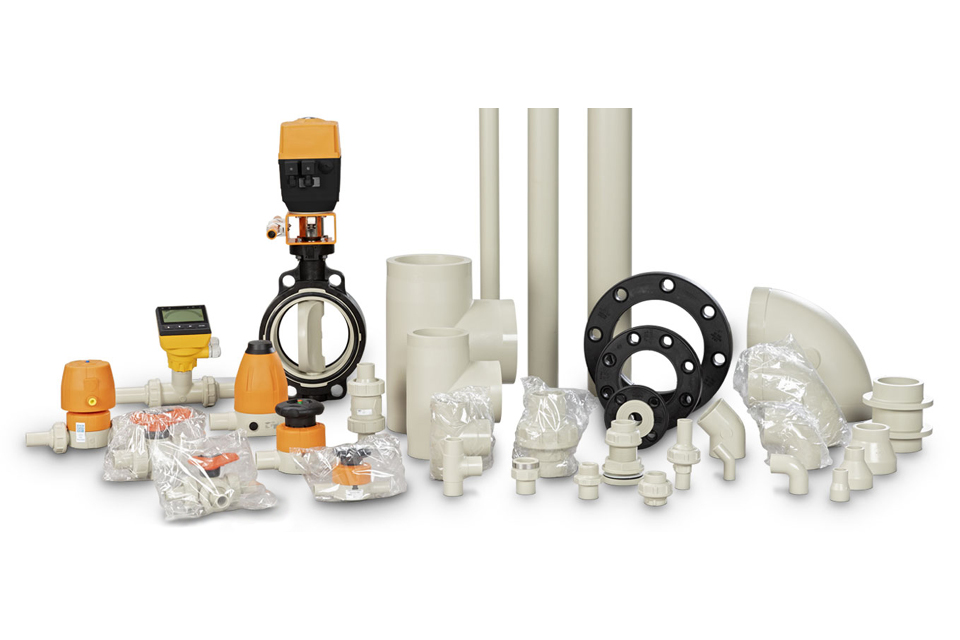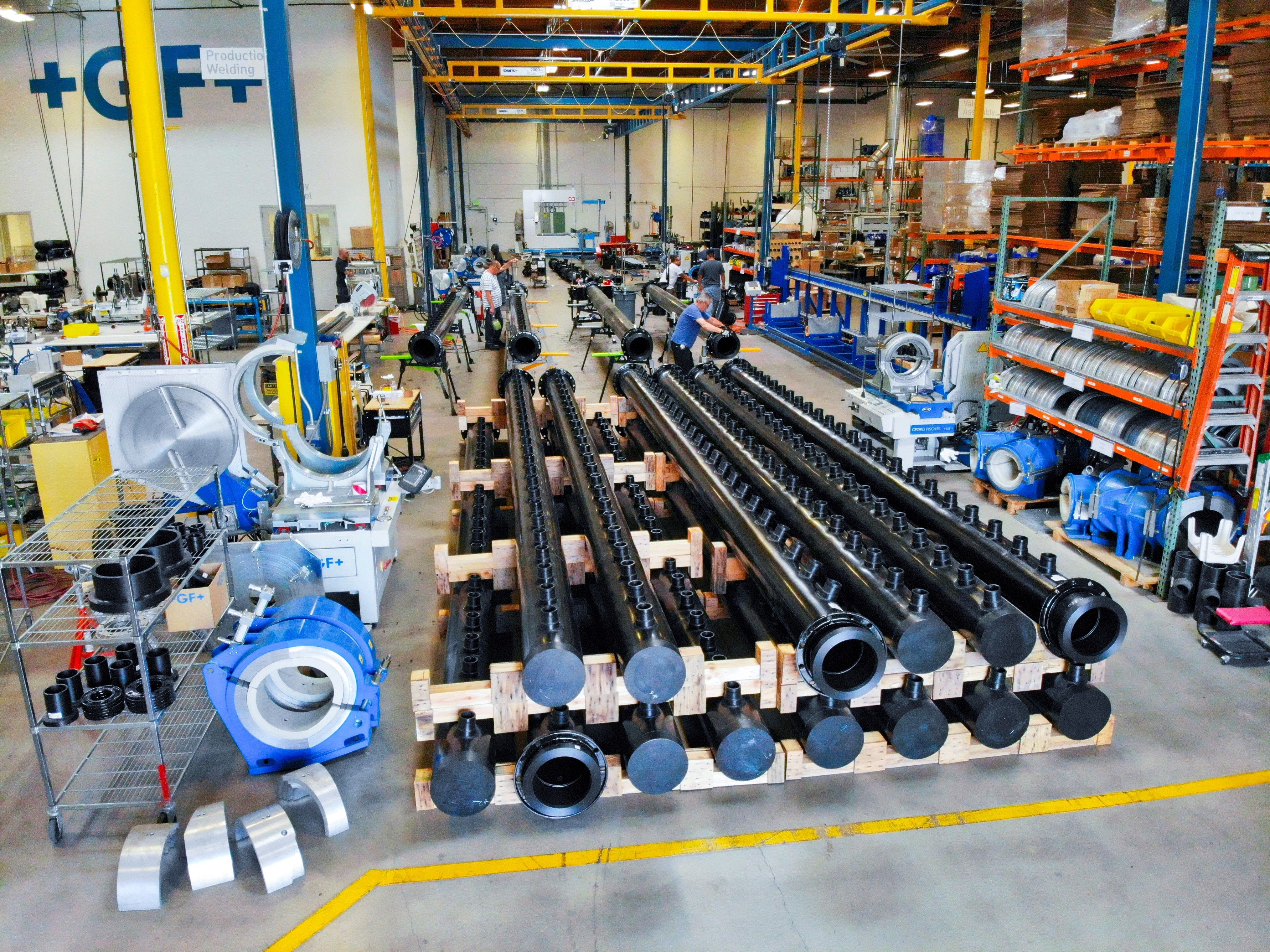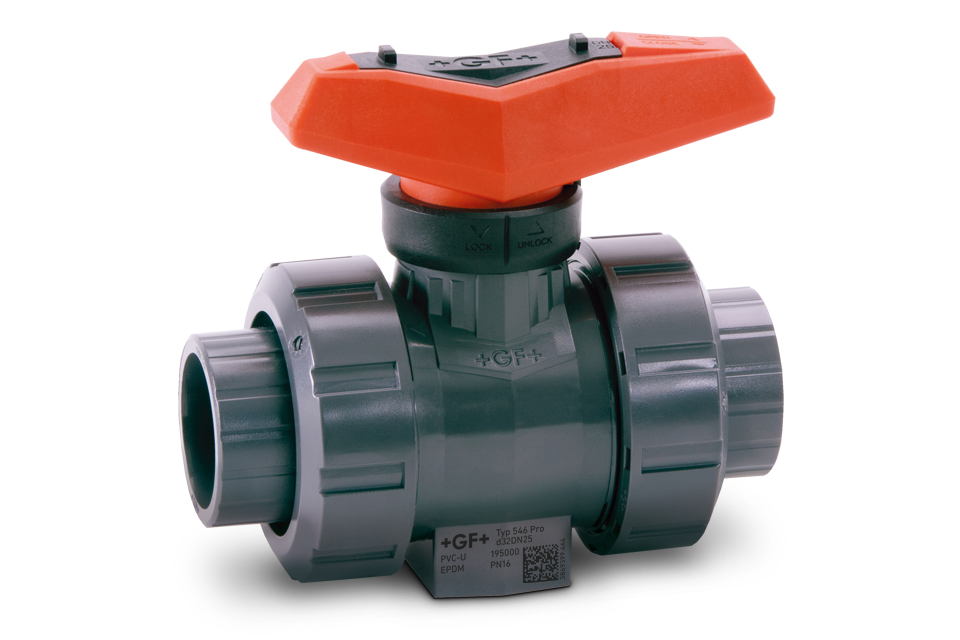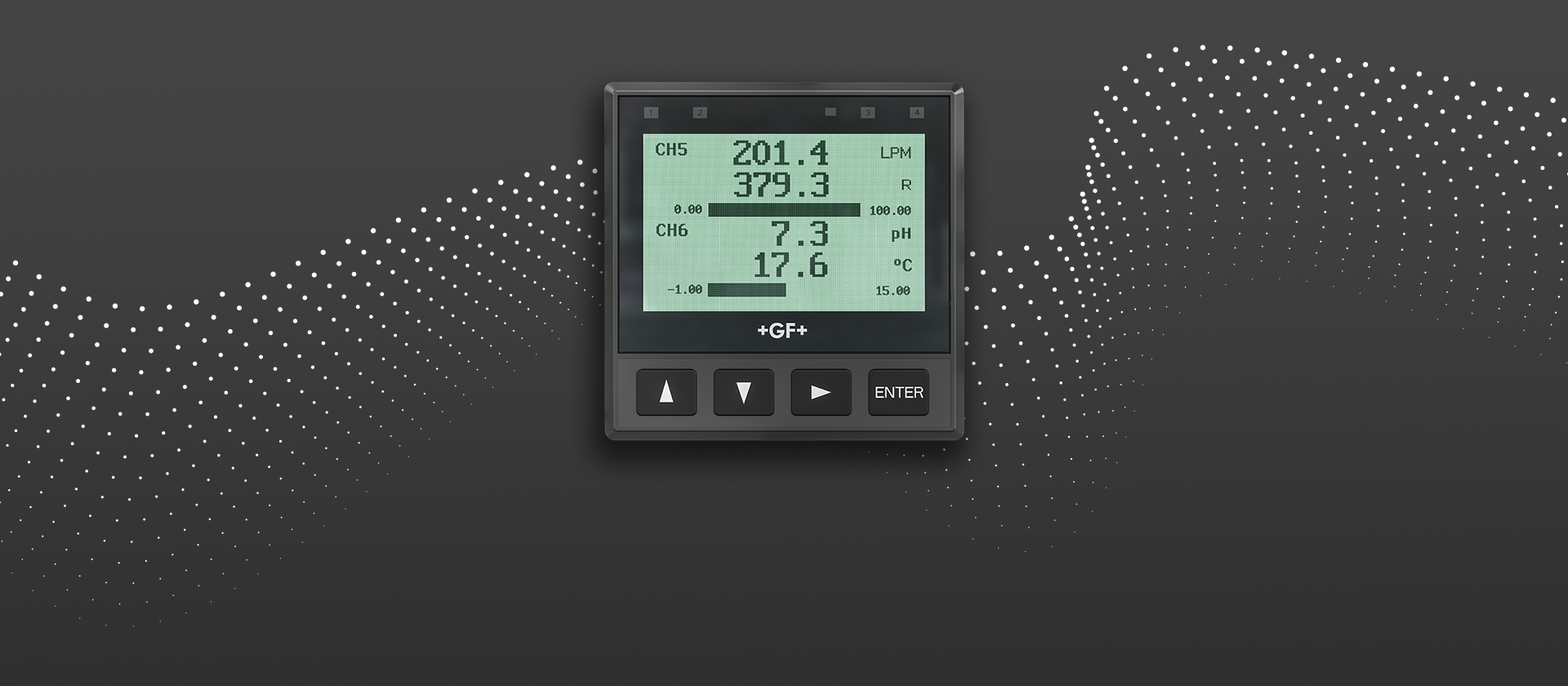Enhanced Efficiency and Durability
In an Anion Exchange Membrane (AEM) electrolyzer, electrical energy splits water into hydrogen and oxygen through an electrochemical reaction in the AEM stack. The stack contains multiple cells, each separated by an anion exchange membrane into anode and cathode half-cells. Water oxidizes at the anode to produce oxygen, protons, and electrons, while at the cathode, protons react with electrons to generate hydrogen. To enhance conductivity and efficiency, a low-concentration alkaline solution like potassium hydroxide (KOH) is used.
Our PROGEF Standard (PP-H) piping solutions meet the requirements to handle KOH solutions, depending on the lye's concentration level of 1-3% . PROGEF PP-H pipes offer low leach-out values, minimizing the release of ions and total organic carbon (TOC) into the KOH-water mix and preventing contamination that could affect the electrolyser’s stack.
Additionally, our PVC-U systems provide exceptional chemical and corrosion resistance suitable for temperatures ranging from 0°C to 60°C. Our welded PVC-U system, complete with fittings and valves, ensures efficient processes and a long operational lifespan.








